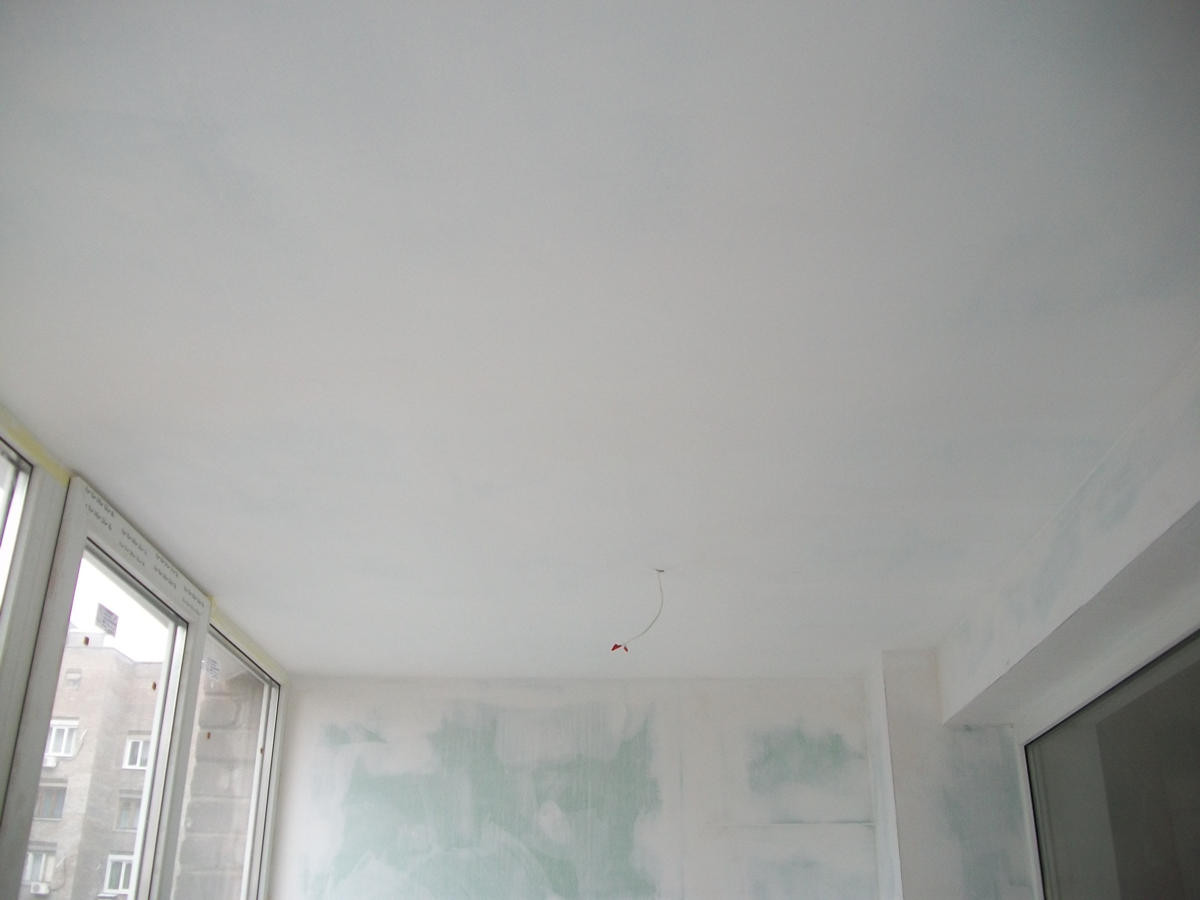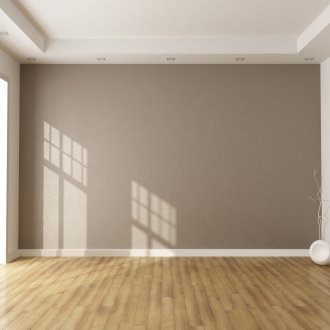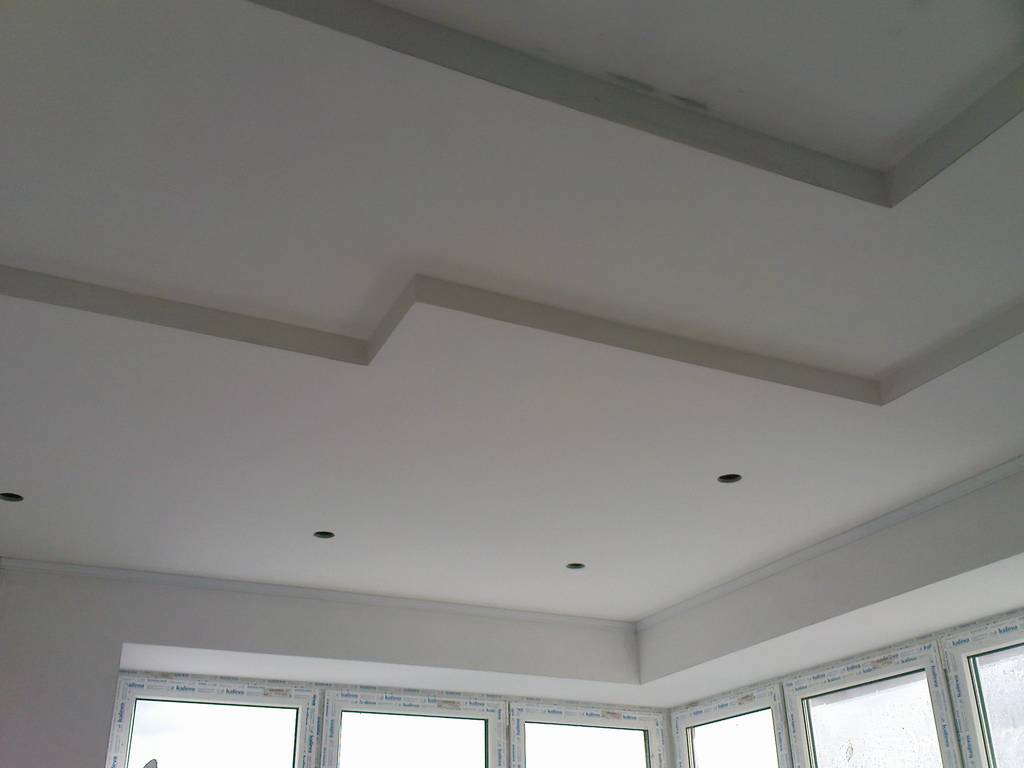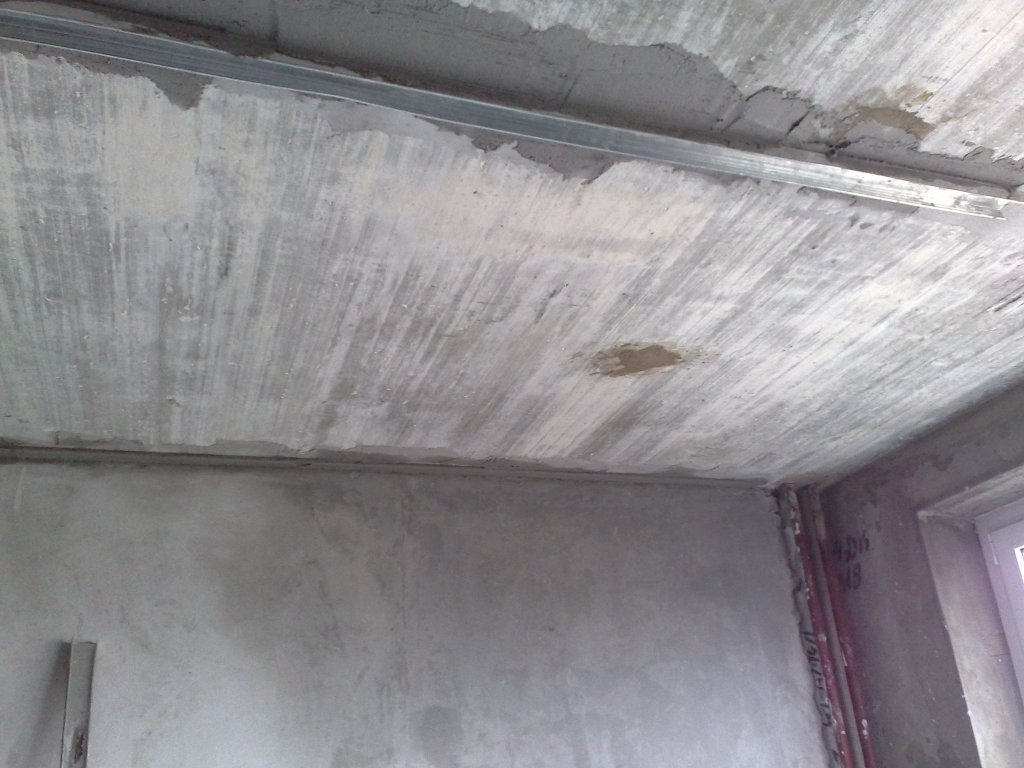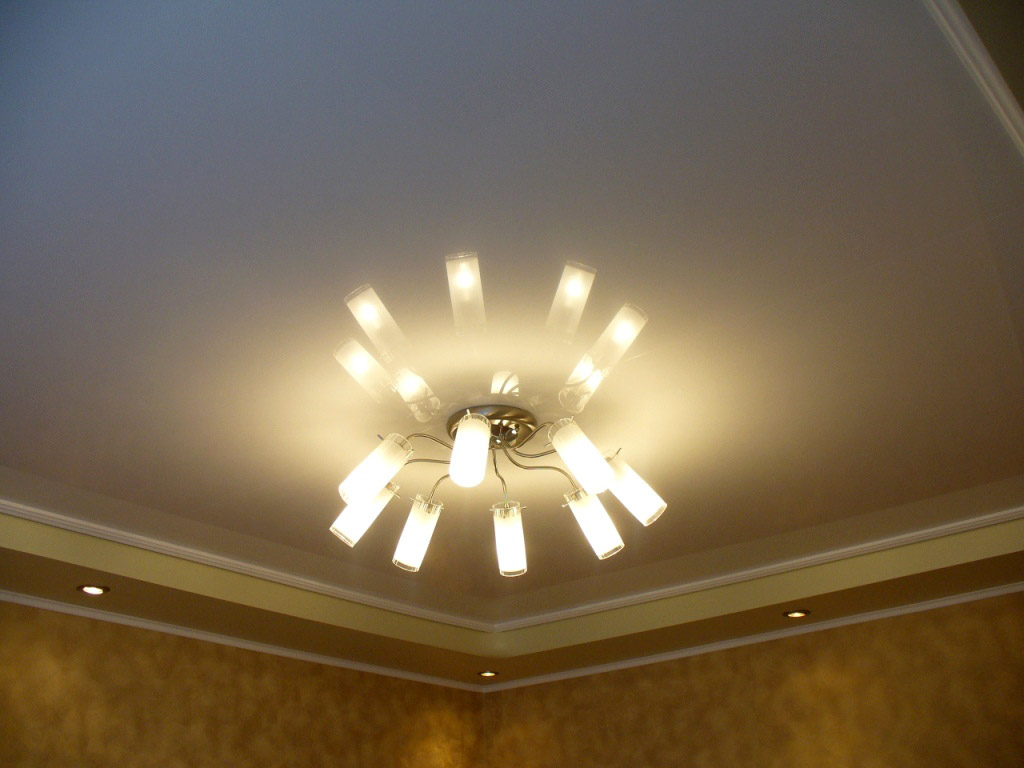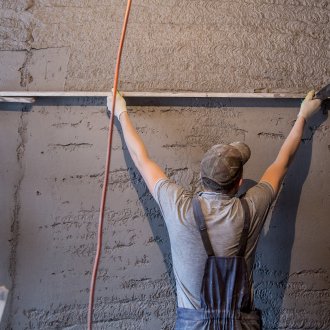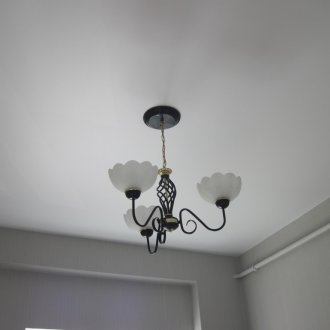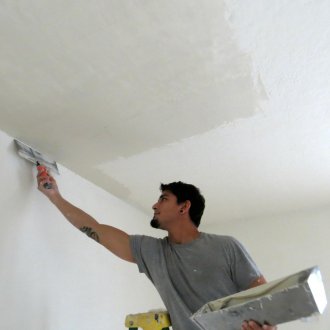Leveling the ceiling: basic methods
Content
Aligning the ceiling with your own hands is a responsible, complex and time-consuming process, because the appearance of the room as a whole will depend on the quality of the work done, so it is extremely important to choose the best way to align the ceilings, adhere to the technology and use high-quality materials and tools.
Ceiling alignment methods
The technology of leveling the ceiling is to determine the height difference and its elimination. To do this, the previous finish is removed, the suspended or plasterboard ceiling is dismantled. And only after that with the help of the building level its differences in height change.
If the difference is more than 5 cm, it is recommended to level using plaster and then apply a layer of finishing putty. In this case, a crude leveling method can be used. In this case, a layer of plaster is first applied to the surface. After this, it is necessary to apply a special mixture in several layers. The last step is to paint.
Actively used and alignment of the ceiling with drywall, the use of suspended or suspended ceilings. These methods can be attributed to dry methods of leveling the surface.
If the difference does not exceed 2 cm, then you can apply the alignment of the ceiling with putty without the use of plaster. In this case, two types of putty are used - start and finish. With a difference of 2 to 5 cm, it is recommended to putty on a reinforced mesh, which should be fixed to the ceiling.
Before applying any leveling mortar, the ceiling should be thoroughly cleaned and primed. Surface finishing can only be carried out when the primer is completely dry.
Drywall Alignment
Aligning the ceiling with drywall is to install sheets on a special design, creating a smooth and even surface. The advantages of this method include the ability to perform work independently without the use of complex tools and expensive materials.
When choosing a dry leveling method, it is best to give preference to drywall. The technology is very simple and even for a person without experience in construction:
- The first stage is the marking of the points along which the suspensions holding the structure will be installed, so this step should be approached with all responsibility.
- If you place them unevenly, then the design will be tilted or even break.
- Installation of wiring and other communications is carried out, which will be hidden by a drywall construction.
- The frame is made. For this, a metal profile is used.
- Preparation of drywall sheets and giving them the necessary shape and size.
- Fastening sheets to the frame.
- The joints are closed with putty, and when it dries, a layer of plaster is applied on top.
Using a drywall, you can align the ceiling in the entire apartment. For the design of the bathroom and kitchen, it is recommended to use sheets with a good indicator of resistance to the negative effects of moisture.
Using drywall has several advantages:
- the use of drywall makes it possible to hide even inconsistencies in the floors;
- under the sheets you can hide the wiring and other communications;
- with the help of this material it is possible to produce complex architectural structures;
- installation takes a minimum of time and is carried out dry, which facilitates the work of inexperienced builders;
- the gap between the drywall and the concrete base can be filled with insulation, which will insulate the room and reduce the level of extraneous noise;
- drywall passes air well, so condensation does not accumulate on it.
Despite the obvious advantages of this leveling method, drywall has several disadvantages:
- the height of the ceilings is reduced;
- risk of mold on the surface;
- Between the concrete base and drywall can be insects and rodents;
- fragility of the material.
If the surface irregularities are low, you can not lose the height of the ceiling. However, with large differences, it is very difficult to do without using dry leveling methods.
Plaster leveling the ceiling
The most popular method is to level the ceiling with plaster. For this, gypsum plaster is most often used, which provides a perfectly smooth surface.
The main stages of plastering:
- Training. It is necessary to remove or cover the film with the entire situation in the room, and clean the base. The better the removal of the old finish, the better the layer of plaster. Prime the surface and allow to dry.
- Installation of beacons and nets. To align the ceiling with beacons, it is necessary to install beacons over the entire surface area. This stage can be skipped, but only full compliance with the technology will ensure high quality of the ceiling finish, its strength and durability. To protect against cracks, a special reinforcing mesh is installed. It is laid over the entire surface, including seams and joints. The net is fastened with dowels or nails.
- Putting plaster. First you need to prepare a solution that should be applied to the surface within half an hour, so the volume of the solution should be calculated depending on the speed of work. The solution should first be applied in a thin layer to create a tight bond with the base. And only after that apply it on the lighthouses, taking into account all the surface irregularities. It is best to apply the mixture in two layers.
- Remove beacons. After that, the holes that remained after them should be repaired with a solution.
- Surface alignment. 15 minutes after applying the last layer, it is necessary to wipe the surface with a special grater.
- Finishing work. The last step may be painting, wallpapering the ceiling, applying liquid wallpaper or laying tiles.
However, before painting, one more operation should be included in the leveling process - putty. Aligning the ceiling for painting implies the absence of the slightest irregularities, which putty can be eliminated.
The main advantages of plaster:
- allows you to save the height of the ceilings;
- ecological purity of solutions;
- resistance to moisture, which allows you to use this method for finishing bathrooms and kitchens;
- subject to the technology, the plaster will last a long time without loss of external and operational qualities;
- any finishing can be used;
- the composition of the mixture does not include combustible components, so under the influence of fire or high temperatures, soot will not remain on the surface of the ceiling.
However, ceiling plaster has a number of disadvantages:
- laborious and lengthy process, which is difficult to carry out independently without proper experience and skill level;
- with strong differences, the cost of leveling with mixtures will be quite expensive;
- in such a ceiling it will not be possible to place communications and additional lighting devices;
- not recommended in new homes that are still shrinkable.
In the absence of the necessary experience and skill, the finished ceiling may turn out to be not quite even, which will create additional difficulties in further decoration.
Ceiling leveling putty
The most difficult and responsible method is continuous leveling with putty. It can be used after plastering or with small differences - on its own. It is recommended to apply the solution in two layers, because the finishing putty gives a lot of shrinkage.
Stages of the work:
- Preparation of the base, which includes cleaning the surface of old paint and plaster. Then the level of differences is checked. Hard putty can be used only with a small difference. Before its application, the surface is primed.
- Preparation of the solution using dry mixes.
- Application of several layers of putty, each of which is put only after the previous has dried. In order to keep the solution well, and do not form cracks, you can stick a nylon mesh. First, starting and then finishing putty is applied.
- Sanding the surface with sandpaper.
- After that, the surface can be painted or finished in any other way.
The main advantages of this method include:
- if you level the ceiling with putty, you can maintain the original height of the ceilings;
- mixtures are made of environmentally friendly, safe and non-toxic materials, therefore, they can be used to decorate the ceiling in the bedroom or children's room;
- complex tools are not used for work, and preparation of mixtures does not take much time.
The main disadvantage of this method is the possibility of its use only if there are no significant level differences. Otherwise, its use is inefficient and quite expensive.
There are several basic ways to level the ceiling in a living room. The choice of one or another method depends on the level of differences, the purpose of the room, the method of surface finishing, as well as personal preferences. Also, the choice of the leveling method is affected by the dimensions of the room. For low ceilings, the use of drywall constructions is not recommended. However, the choice of the alignment method is not as important as the careful performance of work, taking into account all the technological features of the material. In this case, the ceiling will turn out to be smooth and beautiful, and will last for a long time without loss of external and operational qualities.
